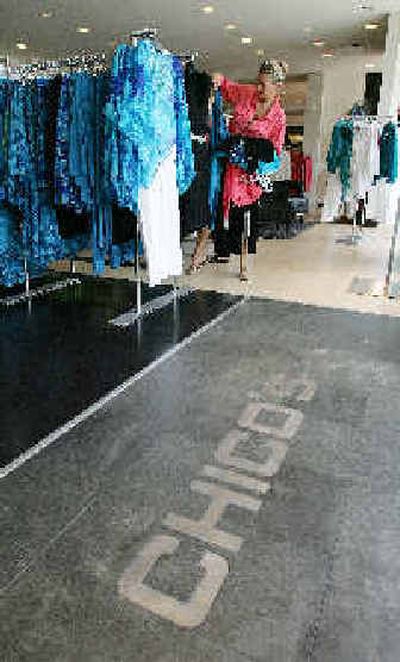Chasing Chico”s

NEW YORK – What looked like a sure bet – selling clothes to women who are over 35 and at the peak of their earnings and spending power – has turned out to be much harder than many retailers anticipated.
Janeville, a new chain opened by Gymboree Corp., has delayed its expansion for now because sales have fallen short of expectations. And some of the new designer collections featured at department stores and aimed at 35-plus shoppers have gotten a lukewarm reaction and are being reworked.
Many retailers have been inspired by the success of Chico’s FAS Inc., which has won a great following among middle-age shoppers with its stylish but comfortable clothes. But merchants are learning there is more to reaching this market than just creating new fashions or new stores.
“Right now, the only proven player is Chico’s, but they are having such phenomenal performance that everyone is trying to get a piece of the market,” said James Chung, president of Reach Advisors Inc., a Boston-based marketing strategy and research firm. “Everyone is trying to find that niche.”
There are some successes – discounter Target Corp. appears to be doing well with its own fashion label, Linden Hill, that appeals to this 35-plus customer. And industry observers are eagerly awaiting the opening of Gap Inc.’s new store concept, Forth & Towne, which aims to reach that age group. It will be launched with five stores this fall – four in the Chicago area, and one in New York.
Women ages 35 to 54 spent $31.11 billion on apparel in the 12 months ended February, up 4.5 percent from a year earlier, according to the NPD Group Inc., a market research firm based in Port Washington, N.Y. That consumer group is the second-largest in terms of apparel spending, after the 18-to-34 age group, which spent $36.34 billion in the same period, a 6.4 percent gain.
Selling to the over-35 group is less tricky than marketing to teens, who keep wanting new styles and don’t stick to any one store; once they find a store they like, older shoppers tend to keep going back to it.
But this market does have its pitfalls. The biggest issue that stores, particularly Gap, face is not turning off customers with a concept that makes them feel old, according to Wendy Liebmann, president of WSL Strategic Retail, a New York marketing and retail consulting firm.
“People want to be part of the whole, but they also want to be recognized for their point of difference,” Liebmann said.
Alison Minton, 39, who shops for casual items at Gap, said she would be open to going to Forth & Towne or any other stores that target the over 35. She likes fashionable clothes that fit, but doesn’t particularly like shopping side-by-side with 20-year-olds.
At the same time, she says, “I don’t want stores with signs that say ‘over 35.’ “
Arnold Aronson, managing director of retail strategies at Kurt Salmon Associates, noted that middle-age women have a wide range of tastes and preferences – unlike younger shoppers – and so “you have to focus on what you stand for” to succeed with these consumers.
Some of the best-known names in the fashion industry have struggled to attract older customers.
Part of the problem was just too many clothes in each store – a number of these fashions from names like Calvin Klein and Michael Kors as well as new labels from Liz Claiborne Inc. all reached the selling floor at the same time. In addition, many of the fashions were just not special enough, according to Kathyrn Deane, CEO of the Tobe Report, a fashion consultancy.
The approach of Gap’s Forth & Towne will include a broad array of merchandise, selling clothes in larger stores than the more boutique-style Janeville or Chico’s. Its garments will be based on a size 10 fit model, instead of the size 8 typically used at most other retailers, a reflection of the fact that many older customers wear larger sizes.
Chung said that if Gap gets it right, “the Forth & Towne customer will not be caught dead in the Chico’s store,” implying that Gap will be going after a customer who is looking for trendier clothing.
Janeville offers more casual clothes than Chico’s, and, despite a bumpy beginning, CEO Lisa Harper believes the new chain will do well because it already has a built-in base of female customers who shop at its Gymboree stores and its Janie and Jack stores, a more upscale children’s clothing brand. The company does cross-marketing to bring in customers to Janeville, which currently has 15 stores but is projected to eventually have 400.
“We fixed a lot of things,” Harper said. While the customer likes to buy complete outfits, the store had too many of them and not enough individual items like separates, she said. The company revamped its merchandise for the first quarter, and sales are improving, she said.
Michael Smith, a Chico’s spokesman, said the market is big enough for all the competition, but the company nonetheless is strengthening its position. It has begun testing Soma by Chico’s, a lingerie chain, in August 2004, targeting the customer who feels uncomfortable at Victoria’s Secret.